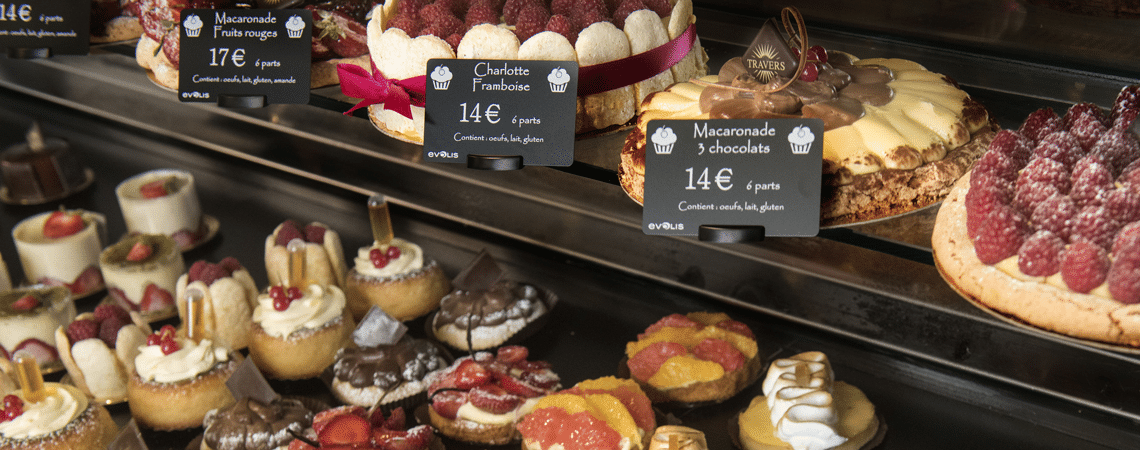Paper price tags compared to plastic cards
To comply with the latest legislation on food labelling and meet consumer expectations, retailers must now be more transparent when it comes to price, ingredients and food safety (product origin and allergens).
Although the law may seem restrictive, it's best to see it as an opportunity to renew your labelling materials. And as with any other business, customers are more attracted by a professional and attractive display.
A harmonious, clearly legible, clean and attractive signage reflects in part the professional image of a business.. It's no easy task to find a price label that's affordable, aesthetically pleasing, quick to set up, easy to clean and contains all the information you need in a minimum of space.
Paper: less expensive?
Still widely used, simple cardboard or paper is certainly the cheapest solution (around €0.10 per label), with the following disadvantages:
- its rapid degradation due to humidity,
- the time spent on its manufacture and renewal,
- the difficulty of making a straight cut,
- stains set in easily, making labels difficult to clean
- a less flattering appearance
Please note: the cost is very often underestimated, as it does not take into account the time spent on manufacturing, cutting and laminating.
Handwriting: really practical?
Many small businesses find that writing their labels by hand is quicker and makes updating more flexible.
But handwriting is often present:
- spelling mistakes
- poor legibility
- a relative aestheticism depending on who is writing
- risks of chalk or felt-tip pen erasure
- problems managing the space available on the label
- relative hygiene
Personalised printed plastic cards in shop
Another alternative to paper labels has been very successful in recent years:
PVC labels that you print yourself using a small office printer. Highly resistant, professional-looking and capable of containing all the information consumers need, plastic labels are revolutionising labelling in fresh produce departments to the same extent as electronic solutions, which are, however, more expensive.
The advantages and disadvantages of the plastic card printing solution
The main advantages of this system are the autonomy it offers retailers and its aesthetic appeal:
- Resistant and easy to clean
- Saves time (around 30 minutes a day compared with other methods)
- Professionalising your brand image
- Compatibility with food contact
- Labels can be fully customised
- Fast response times for price updates, promotions, etc.
Disadvantages include the need to use a computer and to reprint the cards each time the price changes, as the cards are not reusable.
That said, there are small printers on the market that sit on the corner of a desk and are connected to a PC. Thanks to the software sold with the printer, the label is created seamlessly and automatically, because these solutions incorporate card templates that are very easy to update. No specific IT knowledge is required. These solutions come with a wide range of card models.
The plastic label printed directly at the point of sale is therefore an efficient solution compared to the time-consuming production of a paper label. The cost of printing on both sides of the label is less than 25 cents.
